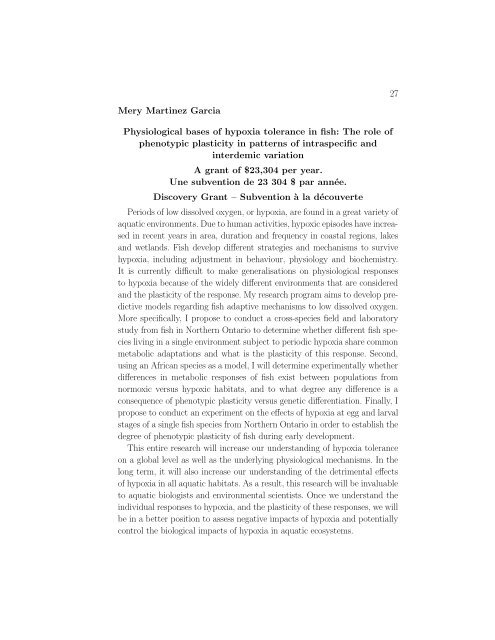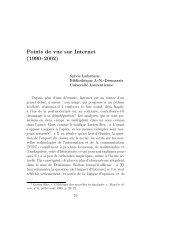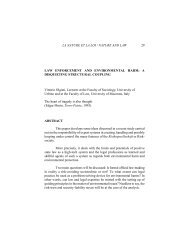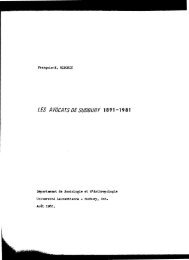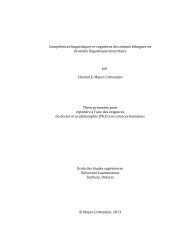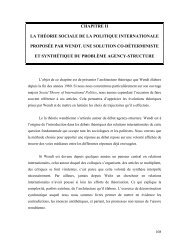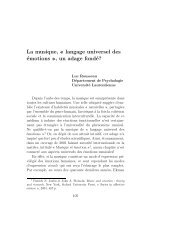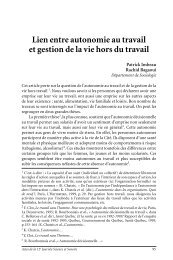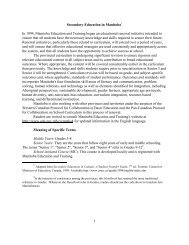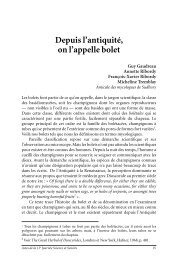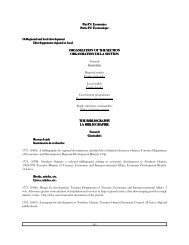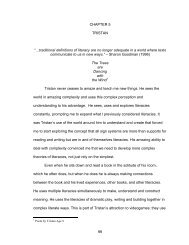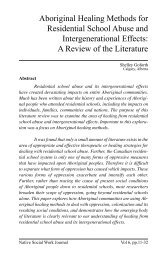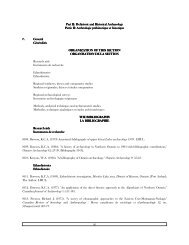NSERC grants at Laurentian University Subventions du CRSNG `a l ...
NSERC grants at Laurentian University Subventions du CRSNG `a l ...
NSERC grants at Laurentian University Subventions du CRSNG `a l ...
- No tags were found...
Create successful ePaper yourself
Turn your PDF publications into a flip-book with our unique Google optimized e-Paper software.
27Mery Martinez GarciaPhysiological bases of hypoxia tolerance in fish: The role ofphenotypic plasticity in p<strong>at</strong>terns of intraspecific andinterdemic vari<strong>at</strong>ionA grant of $23,304 per year.Une subvention de 23 304 $ par année.Discovery Grant – Subvention à la découvertePeriods of low dissolved oxygen, or hypoxia, are found in a gre<strong>at</strong> variety ofaqu<strong>at</strong>ic environments. Due to human activities, hypoxic episodes have increasedin recent years in area, <strong>du</strong>r<strong>at</strong>ion and frequency in coastal regions, lakesand wetlands. Fish develop different str<strong>at</strong>egies and mechanisms to survivehypoxia, including adjustment in behaviour, physiology and biochemistry.It is currently difficult to make generalis<strong>at</strong>ions on physiological responsesto hypoxia because of the widely different environments th<strong>at</strong> are consideredand the plasticity of the response. My research program aims to develop predictivemodels regarding fish adaptive mechanisms to low dissolved oxygen.More specifically, I propose to con<strong>du</strong>ct a cross-species field and labor<strong>at</strong>orystudy from fish in Northern Ontario to determine whether different fish speciesliving in a single environment subject to periodic hypoxia share commonmetabolic adapt<strong>at</strong>ions and wh<strong>at</strong> is the plasticity of this response. Second,using an African species as a model, I will determine experimentally whetherdifferences in metabolic responses of fish exist between popul<strong>at</strong>ions fromnormoxic versus hypoxic habit<strong>at</strong>s, and to wh<strong>at</strong> degree any difference is aconsequence of phenotypic plasticity versus genetic differenti<strong>at</strong>ion. Finally, Ipropose to con<strong>du</strong>ct an experiment on the effects of hypoxia <strong>at</strong> egg and larvalstages of a single fish species from Northern Ontario in order to establish thedegree of phenotypic plasticity of fish <strong>du</strong>ring early development.This entire research will increase our understanding of hypoxia toleranceon a global level as well as the underlying physiological mechanisms. In thelong term, it will also increase our understanding of the detrimental effectsof hypoxia in all aqu<strong>at</strong>ic habit<strong>at</strong>s. As a result, this research will be invaluableto aqu<strong>at</strong>ic biologists and environmental scientists. Once we understand theindivi<strong>du</strong>al responses to hypoxia, and the plasticity of these responses, we willbe in a better position to assess neg<strong>at</strong>ive impacts of hypoxia and potentiallycontrol the biological impacts of hypoxia in aqu<strong>at</strong>ic ecosystems.


